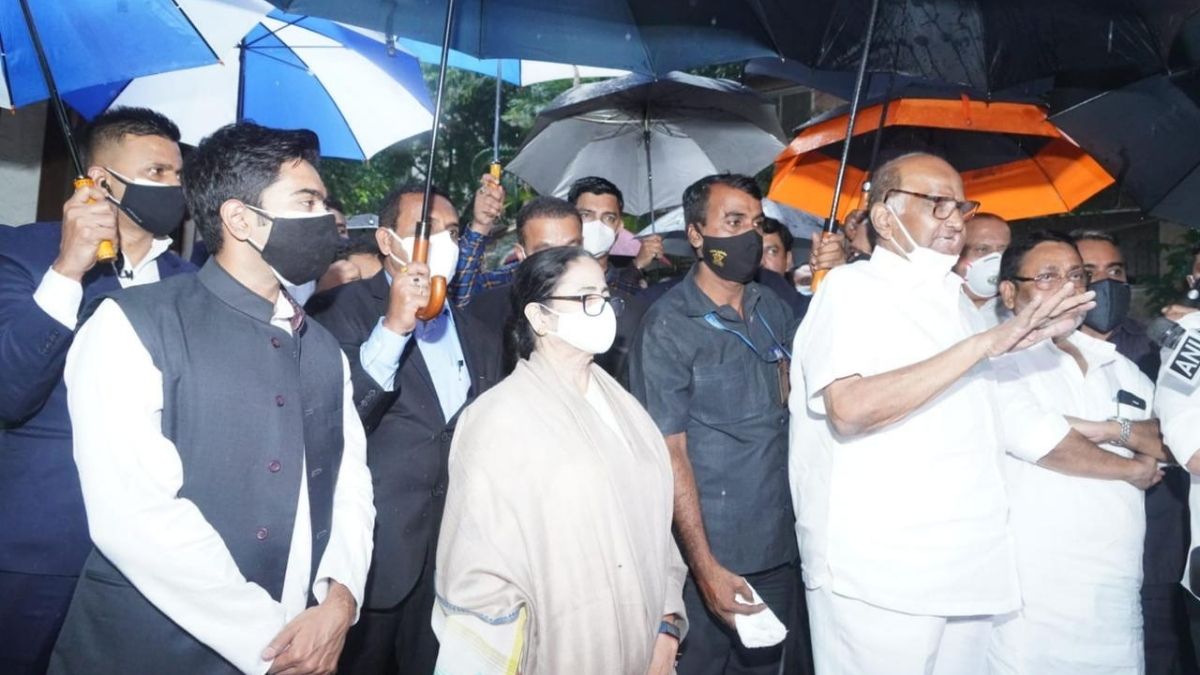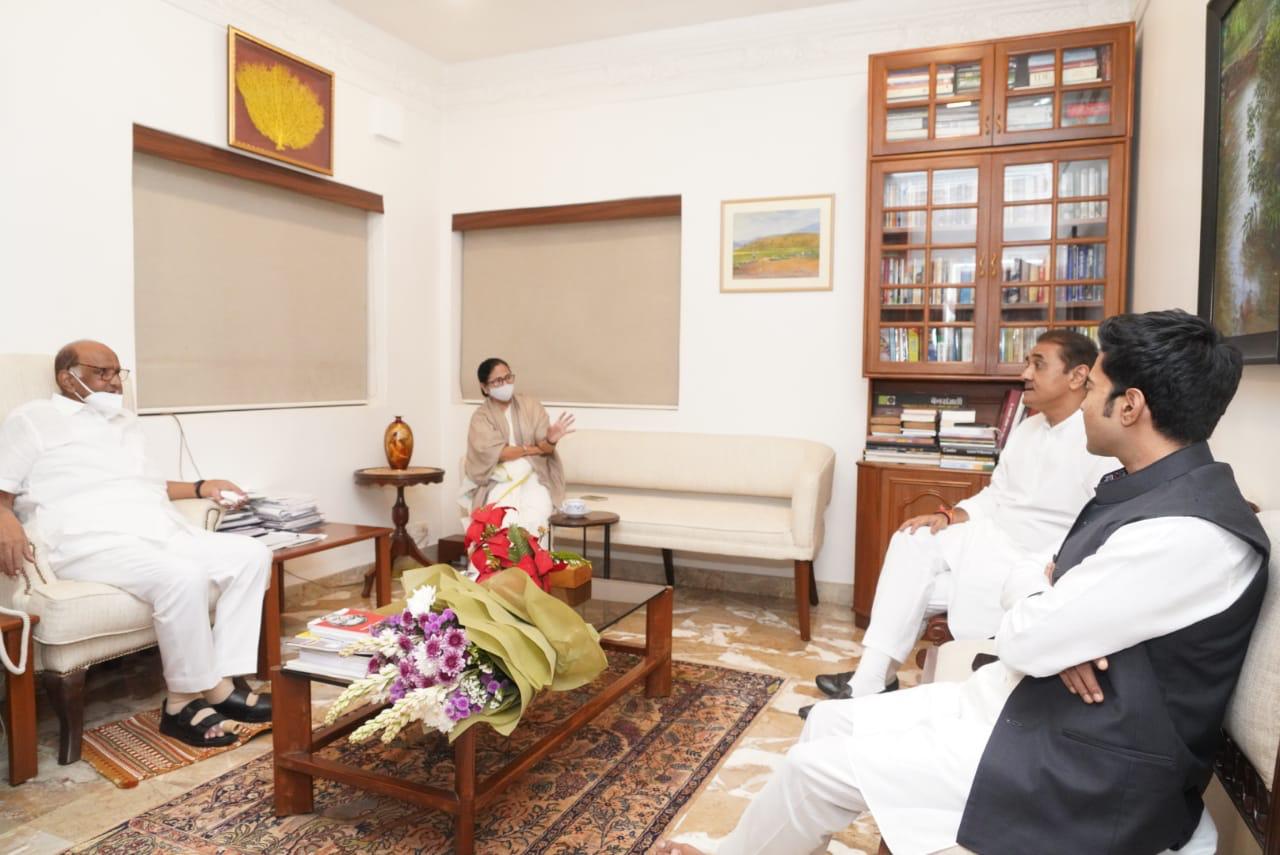Congress calls for opposition unity as Mamata Banerjee questions existence of UPA

Congress leader Kapil Sibal tweeted for opposition unity after Mamata Banerjee's comment on UPA and its existence
The Indian National Congress highlighted a cautionary alarm, which underlines the importance of unity during such tiring times – a day after TMC supremo Mamata Banerjee snubbed at the grand old party in a bid to enlarge her role in the opposition front.
Kapil Sibal, the former minister during the UPA rule, has tweeted, "UPA without the Congress. UPA will be a body without a soul. Time to show opposition unity."
https://twitter.com/KapilSibal/status/1466245917636370441
Sibal, who is currently a member of the Rajya Sabha, has tweeted in response to Banerjee’s statement after meeting Sharad Pawar.
TMC or Trinamool Congress was once part of the UPA government before BJP came to power in 2014. The UPA or United Progressive Alliance has ruled the country for a decade. “We've tried to include them (Trinamool) in various socio-political issues where Congress made its name. The opposition should not get divided and fight amongst themselves, we've to fight against BJP together,” Congress leader Mallikarjun Kharge said.
"What UPA? There is no UPA now? What is the UPA? We will clear all issues. We want a strong alternative," said Banerjee when asked if Sharad Pawar should lead the UPA.
TMC is currently in the process to portray Mamata Banerjee as the only alternative face against BJP. Their perception is fuelled by a steady stream of leaders joining TMC from Congress in Bihar, Haryana, Goa, Meghalaya and others.
What is UPA?
UPA, also known as United Progressive Alliance, came into existence in 2004 after Congress won 140 plus seats in the General Election. Congress won just seven seats more than BJP and needed to stitch an alliance to keep Bhartiya Janata Party at bay.
The then CPM General Secretary Harkishen Singh Surjeet took the lead in keeping BJP out of secular opposition. He and Congress eventually forged a post-poll alliance with 14 parties. These 14 regional or state parties were RJD, DMK, NCP, PMK, TRS, JMM, LJP, MDMK, AIMIM, PDP, IUML, RPI(A), RPI(G) and KC(J).
Meanwhile, four Left parties, including CPM and CPI, had supported the government from outside, based on Common Minimum Programme (CMP). The CMP was signed in May 2004.
The name ‘United Progressive Alliance’ was not the first choice. The leaders wanted to include the word ‘secular’. But the late DMK patriarch M Karunanidhi told Sonia Gandhi that secular in Tamil means non-religious and suggested Progressive Alliance, which everyone accepted.
Thus on May 22, 2004, Manmohan Singh took oath as Prime Minister of the alliance government.
 Mamata Banerjee in the meeting with NCP Sharad Pawar
Mamata Banerjee in the meeting with NCP Sharad Pawar
All was not well with UPA
TRS left UPA in 2006 and became the first party to do so. They quit the government over their demand for a separate state, Telangana. On the other hand, Vaiko’s MDMK left UPA after accusing it of failing to implement most of the schemes in the CMP.
In 2008, the Left parties withdrew their support as the government pursued the nuclear deal with the US. Differences cropped up when in 2005, Manmohan Singh visited Washington DC for renewing the civil nuclear deal with America. The government and the Left Front engaged in protracted talks until the latter withdrew their support.
After this, the government was reduced to a minority. Miraculously, the government survived the no-confidence motion as Samajwadi Party (SP) came to its rescue, highlighting the quick shift of emotions in Indian politics. Mulayam Singh Yadav’s SP was upset with Congress in 2004 for not inviting them for being a part of the UPA government.
State electoral reshuffling led PDP and PMK to quit UPA in 2009, and PMK aligned with AIADMK in Tamil Nadu against the Congress-DMK alliance. Similarly, PDP had left UPA as Congress decided to shift its support to National Conference in Jammu and Kashmir.
Here comes TMC in UPA
Surprisingly, UPA returned to power in 2009 with Congress bagging 206 seats – a much better position than last time but still needed allies. This provided the inroads for TMC and National Conference to the alliance. As a part of the government, TMC chief Banerjee got the Railways portfolio.
Notably, compared to UPA-I, UPA-II had a lesser number of allies. The number reduced to five from 14 – TMC, NCP, DMK, Indian Union Muslim League and National Conference. Towards the end of the second term, Mamata Banerjee started to dictate the terms of UPA-II. In 2012, Banerjee named MP Mukul Roy as Railway Minister after Dinesh Trivedi increased the passenger fare.
But in September 2012, TMC withdrew its minister over the government’s decision to implement FDI in multi-brand retail. The party asked six of its ministers to resign and quit UPA. DMK also left the government.
Is Mamata right in her statement?
Technically, Mamata Banerjee is correct in saying that UPA is no more. The alliance is indeed dead after 2014 as it was a post-poll alliance that housed parties from different backgrounds and should not be expected to remain united as opposition. There hasn’t been a single meeting of its member parties in these last eight years.
Although invites to the alliance members were sent in the name of Sonia Gandhi as UPA chairperson, there have been no meetings. Mamata Banerjee had already realized that there was no further need for a Congress hand-holding after the 2012 dramatic exit. Therefore, she is trying to portray a Congress minus opposition.
Another question remains at large, i.e., who are its member parties. Most of its primary member parties had already quit the alliance, including DMK, TMC, PDP, AIMIM. Presently, the grand old party is forging multiple multi-dimensional ties in the states to retain power. For instance, in Maharashtra, Congress is part of the ruling MVA alliance. They have shared a bitter-sweet relationship with Left Front both in the Centre and the states. Most of their alliances are based on the current fortune and vices dependent on the particular geography.
The sticky situation is quite similar to one after 1977 when several parties came together to form a government and part their ways in just three years. Mostly, this has been the fate of non-Congress or non-BJP union fronts pan-India. They could not survive the heat as similar political elements mix, not the same.
However, to avoid further stickiness, NCP’s Sharad Pawar had cleared that there is no possibility of Congress-minus-opposition in the near future.
https://www.digpu.com/politics/congress-calls-for-opposition-unity-as-mamata-banerjee-questions-the-existence-of-upa
Comments
Post a Comment